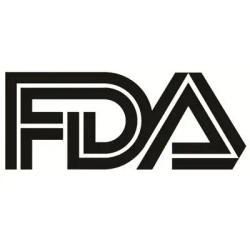
OR WAIT null SECS
Study Finds Costs of Biologic Drugs for Psoriasis Rose Between 2007 to 2021
This analysis pointed to increased costs of biologics given the initiation of newer IL-17 and IL-23 inhibitors, suggesting the use of lower-cost options.
New findings suggest that patients with commercial insurance who began first-line biologic treatments for plaque psoriasis saw average costs of therapies more than double from 2007 to 2021, pointing to more initiations of new interleukin (IL)-17 and IL-23 inhibitors over tumor necrosis factor-alpha (TNF-α) inhibitors.1
These data represented the conclusion of a recent analysis authored by a team of investigators, such as Benjamin N. Rome, MD, MPH, known for his work in the Department of Medicine at Brigham and Women’s Hospital and Harvard Medical School. Rome et al. highlighted that as older drugs such as adalimumab and ustekinumab start to see increased biosimilar competition or become subject to Medicare price negotiation, prices can rise over time.2
As a result of rising costs, limitations are often made by payers on coverage for psoriasis biologics to only individuals facing more severe disease symptoms.3 Such restrictions, the investigators highlighted, can be difficult for both patients and clinicians.
“To understand how the use and cost of biologic medications to treat plaque psoriasis have evolved from 2007 to 2021, we conducted a cross-sectional study of patients initiating biologic drugs for this condition using data from a national commercial claims database,” Rome and colleagues wrote.1
The investigative team's research spanned from 2007 - 2021, and they highlighted that estimated drug rebates that were critical for net treatment cost calculations first became accessible in 2007. The team added that the most recent commercial claims information on use of such treatments extended through December 2021.
Given these facts, the timeframe captures nearly the entire era of FDA-approved biologic drugs for patients in the US with psoriasis, beginning with etanercept's US Food and Drug Administration (FDA) approval. There were 11 biologics approved by the FDA analyzed in total, as identified in the 2019 American Academy of Dermatology−National Psoriasis Foundation treatment guidelines.
These included 7 IL-inhibitors as well as 4 TNF-α inhibitors—certolizumab, adalimumab, etanercept, and infliximab. Among the IL-inhibitors looked into by the investigators, there the IL-12/23-targeting drug ustekinumab), 3 drugs targeting IL-17 (secukinumab, brodalumab, ixekizumab), and 3 targeting IL-23 (tildrakizumab, guselkumab, risankizumab). The research team also included infliximab-dyyb, infliximab-abda, infliximab-axxq, 3 biosimilars for infliximab-that were marketed in the US by 2021.
The study involved the identification of subjects with psoriasis who began their treatments with a biologic agent, with such patients found via the Merative MarketScan database's nationally representative sample of those with commercial insurance. The team determined medication utilization through the use of pharmacy claims or, in the case of clinician-administered drugs, medical claims involving billing codes.
The analysis focused on patients initiating biologics for the first time to avoid the potential confounder of previous therapy outcomes on subsequent selection of treatments. Data that the team gathered on the trial subjects included demographics information as well as clinical characteristics such as related comorbidities and previous non-biologic psoriasis medications.
In terms of key outcomes, the investigative team assessed trends in which biologics were selected by subjects and looked at the ways in which the treatments' average estimated annual net costs shifted over time. The latter trend data was based on commercial net price information that accounted for typical manufacturer rebates.
Among the 76,781 study participants the investigators identified as having begun using biologics, 50.4% were shown to be women and 49.6% as men.1 The investigative team concluded that 30% reported having a diagnosis of concurrent inflammatory arthritis and 71.8% of subjects were between the ages of 30 - 59 years. Over the course of the study, use of IL-inhibitors increased notably compared to TNF-α inhibitors.
The team found that 42% of subjects by 2021 had initiated an IL-23 inhibitor, whereas 21% began using an IL-17 inhibitor.1 In their evaluation of yearly treatment costs, the prices were noted as having risen substantially. The investigators specifically highlighted increases from $21,236 in 2007 to $47,125 by 2021.
They reported wide ranging costs of therapeutics in 2021, from $12,413 for those on infliximab to $70,043 for those using risankizumab.1 If those evaluated had been given a prescription for the least expensive medication within each drug class, average annual costs of these medications in 2021 would have been 44% lower, with a total of $26,363 highlighted by the investigative team.
When they looked into characteristics linked to greater likelihood of initiating an IL-inhibitor over a TNF-α inhibitor, those which indicate such a choice included being older in age, male, being a resident of the northeastern US, and having a lack of comorbid inflammatory arthritis or inflammatory bowel disease.
“In this cross-sectional study of commercially insured patients with plaque psoriasis who initiated first-line biologic medications, the average treatment cost more than doubled from 2007 to 2021 as more patients initiated newer IL-17 and IL-23 inhibitors instead of TNF-α inhibitors,” they concluded.1
References
Rome BN, Han J, Mooney H, et al. Use and Cost of First-Line Biologic Medications to Treat Plaque Psoriasis in the US. JAMA Dermatol. Published online April 16, 2025. doi:10.1001/jamadermatol.2025.0669.
Rome BN, Kesselheim AS, Feldman WB. Medicare’s first round of drug-price negotiation−measuring success. N Engl J Med. 2024;391(20):1865-1868. doi:10.1056/NEJMp2411265.
Learned C, Alsukait S, Rosmarin D, et al. Coverage of specialty drugs for psoriasis and psoriatic arthritis by commercial insurance companies. J Psoriasis Psoriatic Arthritis. 2022;7(4):160-163. doi:10.1177/24755303221101843.


